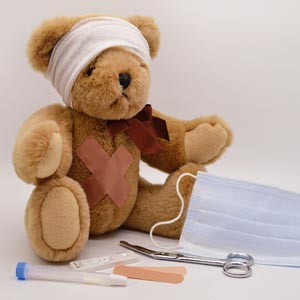Minimally invasive pilonidal sinus disease (PSD) treatment in pediatric patients: A narrative review

Submitted: 27 December 2021
Accepted: 1 February 2022
Published: 15 March 2022
Accepted: 1 February 2022
Abstract Views: 1534
PDF: 709
HTML: 32
HTML: 32
Publisher's note
All claims expressed in this article are solely those of the authors and do not necessarily represent those of their affiliated organizations, or those of the publisher, the editors and the reviewers. Any product that may be evaluated in this article or claim that may be made by its manufacturer is not guaranteed or endorsed by the publisher.
All claims expressed in this article are solely those of the authors and do not necessarily represent those of their affiliated organizations, or those of the publisher, the editors and the reviewers. Any product that may be evaluated in this article or claim that may be made by its manufacturer is not guaranteed or endorsed by the publisher.
Similar Articles
- Assunta Turco, Mariapina Cerulo, Fulvia Del Conte, Vincenzo Coppola, Giovanni Severino, Maria Escolino, Ciro Esposito, Correlation between FLACC scale score and analgesic requirement in children undergoing minimally invasive surgery , La Pediatria Medica e Chirurgica: Vol. 45 No. 1 (2023)
- Cosimo Bleve, Valeria Bucci, Maria Luisa Conighi, Francesco Battaglino, Lorenzo Costa, Lorella Fasoli, Elisa Zolpi, Salvatore Fabio Chiarenza, Horseshoe kidney and uretero-pelvic-junction obstruction in a pediatric patient. Laparoscopic vascular hitch: A valid alternative to dismembered pyeloplasty? , La Pediatria Medica e Chirurgica: Vol. 39 No. 4 (2017)
- Salvatore Fabio Chiarenza, Lorenzo Costa, Maria Luisa Conighi, Elisa Zolpi, Lorella Fasoli, Giulia Brooks, Enrico La Pergola, Cosimo Bleve, GERD surgery in non-neurologic patients: Modified Laparoscopic Hill-Snow Repair is a valid alternative to Nissen fundoplication. Results of a 20 years of follow-up , La Pediatria Medica e Chirurgica: Vol. 45 No. 1 (2023)
- George Vlad Isac, Gabriela Mariana Danila, Sebastian Nicolae Ionescu, Spontaneous resolution and the role of endoscopic surgery in the treatment of primary obstructive megaureter: a review of the literature , La Pediatria Medica e Chirurgica: Vol. 45 No. 2 (2023)
- Maria Enrica Miscia, Maria Castellano, Stella Chiarini, Giuseppe Lauriti, Marco Casaccia, Pierluigi Lelli Chiesa, Gabriele Lisi, Pediatric primary spontaneous pneumothorax: a comparison of treatment at pediatric surgery vs. thoracic surgery departments , La Pediatria Medica e Chirurgica: Vol. 45 No. 1 (2023)
- Salvatore Fabio Chiarenza, Cosimo Bleve, Ciro Esposito, Maria Escolino, Fabio Beretta, Maurizio Cheli, Vincenzo Di Benedetto, Maria Grazia Scuderi, Giovanni Casadio, Maurizio Marzaro, Leon Francesco Fascetti, Pietro Bagolan, Claudio Vella, Maria Luisa Conighi, Daniela Codric, Simona Nappo, Paolo Caione, Guidelines of the Italian Society of Videosurgery in Infancy for the minimally invasive treatment of pediatric nephrectomy and partial nephrectomy , La Pediatria Medica e Chirurgica: Vol. 39 No. 3 (2017)
- Salvatore Fabio Chiarenza, Cosimo Bleve, Ciro Esposito, Maria Escolino, Fabio Beretta, Maurizio Cheli, Vincenzo Di Benedetto, Maria Grazia Scuderi, Giovanni Casadio, Maurizio Marzaro, Leon Francesco Fascetti, Pietro Bagolan, Claudio Vella, Maria Luisa Conighi, Daniela Codric, Simona Nappo, Paolo Caione, Guidelines of the Italian Society of Videosurgery in Infancy for the minimally invasive treatment of the ureteropelvic-junction obstruction , La Pediatria Medica e Chirurgica: Vol. 39 No. 3 (2017)
- Francesca Scarano, Alessandra Dalla Corte, Roberto Michielon, Alessandro Gava, Paola Midrio, Application of a non-pharmacological technique in addition to the pharmacological protocol for the management of children’s preoperative anxiety: A 10 years’ experience , La Pediatria Medica e Chirurgica: Vol. 43 No. 1 (2021)
- Edoardo Bindi, Fabiano Nino, Francesco Pierangeli, Michele Ilari, Taisia Bollettini, Elisa Chiarella, Francesca Mariscoli, Gianluca Gentilucci, Alba Cruccetti, Giovanni Cobellis, Transumbilical laparoscopic-assisted appendectomy versus laparoscopic appendectomy in children: a single center experience , La Pediatria Medica e Chirurgica: Vol. 45 No. 1 (2023)
- Ayu Widya Lestari, Chia-Kuei Lee, Happy Hayati, The impact of parental psychological distress on child behavior issues in hospitalized children , La Pediatria Medica e Chirurgica: Vol. 45 No. 1 (2023)
You may also start an advanced similarity search for this article.

 https://doi.org/10.4081/pmc.2022.281
https://doi.org/10.4081/pmc.2022.281




